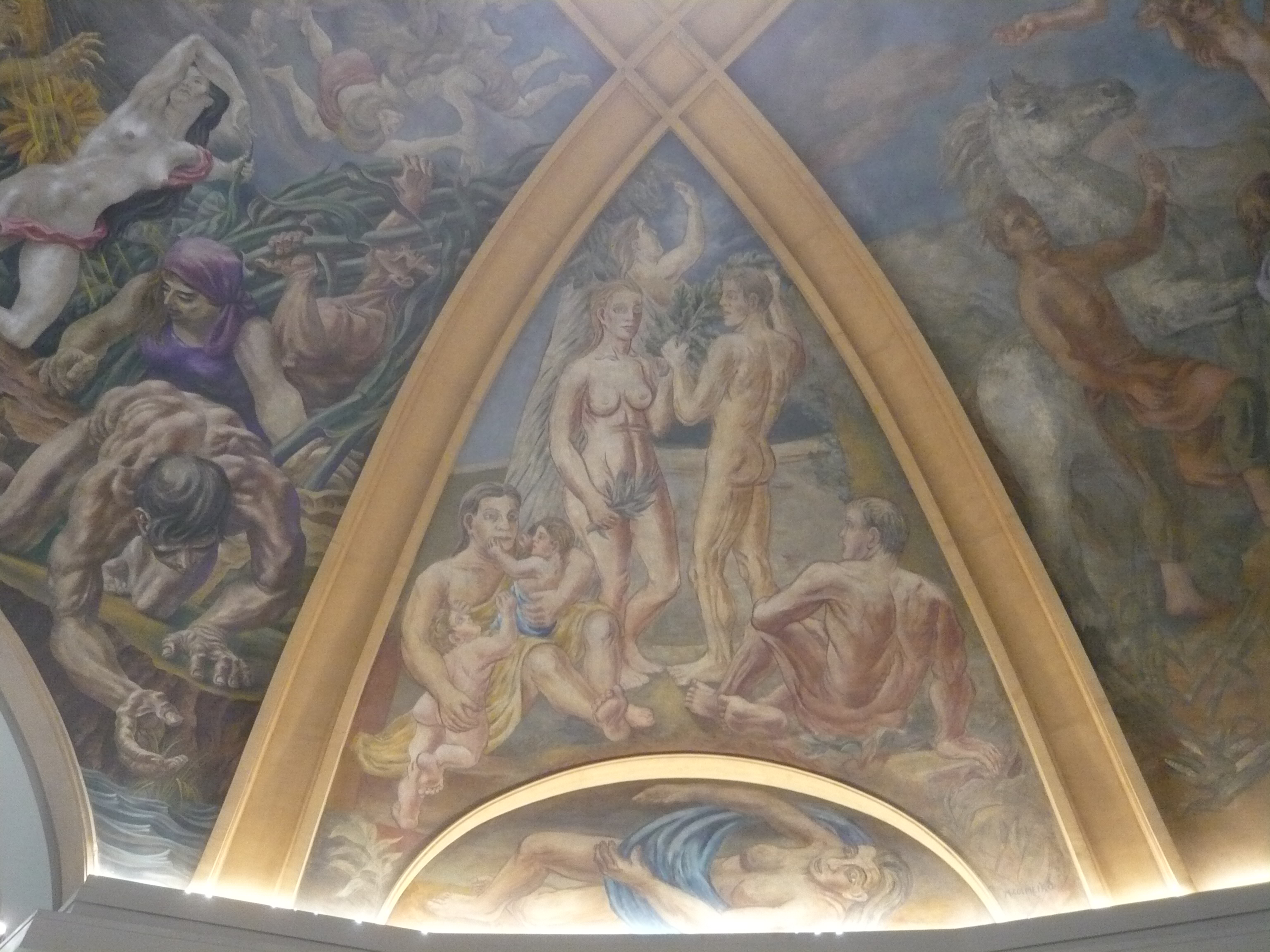Archive
Galería Pacifico’s murals
- MuralBuilding
- Galería Pacifico’s murals
Word Count: 5
- Grupo Taller de Arte Mural
- 1946
- 1946
Oil on mortar
Galerías Pacífico, Av. Córdoba 550, Buenos Aires; Urruchúa’s studio, Calle Carlos Calvo (studio).
Galerías Pacífico (in Av. Córdoba 550, 1992); Museo del Libro y de la Lengua (Av. General Las Heras 2555, 2010).
- Spanish
Dome of 450 square meters and four arches
- Buenos Aires (AR)
A key episode in Argentina’s muralism was the creation of an extensive muralist programme at the Galerías Pacífico in 1946, carried out by the Grupo Taller de Arte Mural.
Word Count: 31

Dome of the Galerías Pacífico, general view (Photo: Milena Gallipoli) 
Manuel Colmeiro, La Pareja Humana, 1946, mural. Galerías Pacífico, Buenos Aires (Photo: Laura Karp Lugo). 
Manuel Colmeiro, Verano, 1946, oil on plaster, 2,5 x 9 m. Museo del Libro y de la Lengua, Buenos Aires. Babino, María Elena. “Manuel Colmeiro en Buenos Aires y su participación en los murales de las Galerías Pacífico.” Quintana. Revista de Estudos do Departamento de Historia da Arte, no. 5, 2006, pp. 161–172. Redalyc, www.redalyc.org/articulo.oa?id=65323971010. Accessed 20 April 2021.
Bermejo, Talía. “Las Galerías Pacífico en la prensa periódica.” Spilimbergo, Fondo Nacional de las Artes, 1999, pp. 210-213.
Gallegos, Damasia. “Las lunetas de Galerías Pacífico. Un estudio de caso.” Anuario TAREA. Anuario del Instituto de Investigaciones sobre el Patrimonio Cultural, no. 1, September 2014, pp. 119–127, http://revistasacademicas.unsam.edu.ar/index.php/tarea/article/view/353. Accessed 23 April 2021.
Rabossi, Cecilia and Cristina Rossi. Los muralistas en Galerías Pacífico, exh. cat. Centro Cultural Borges, Buenos Aries, 2008. Scribd, https://de.scribd.com/document/502764995/71562031-Catalogo-Los-Muralistas-en-CCBorges-2008. Accessed 20 April 2021.
Wechsler, Diana. “El Taller de Arte Mural y las Galerías Pacífico.” Spilimbergo, Fondo Nacional de las Artes, 1999, pp. 210–213.
Word Count: 151
Anonymous. “Taller de Arte Mural.” Correo literario, 1 November 1944, p. 4.
Seoane, Luis. “La pintura mural de Manuel Colmeiro en las Galerías Pacífico.” Galicia. Revista del Centro Gallego, year XXXIII, no. 402, July 1946, p. 26.
Urruchúa, Demetrio. Memorias de un pintor. Editorial Hugo Torres, 1971.
Word Count: 43
- Buenos Aires
- Milena Gallipoli. "Galería Pacifico’s murals." METROMOD Archive, 2021, https://archive.metromod.net/viewer.p/69/2950/object/5140-11020681, last modified: 12-05-2021.
-
Agrupación de Intelectuales, Artistas, Periodistas y Escritores (AIAPE)AssociationBuenos Aires
The Agrupación de Intelectuales, Artistas, Periodistas y Escritores – AIAPE (Association of Intellectuals, Artists, Journalists and Writers) was a main association that helped migrants integrate into Buenos Aires’ cultural life.
Word Count: 30
Luis SeoanePainterMuralistIllustratorLawyerBuenos AiresLuis Seoane is an artist mainly known for his murals, paintings and illustrations. He spent his childhood and youth in Galicia, before settling in Buenos Aires in 1936.
Word Count: 27
Pompeyo AudivertEngraverIllustratorBuenos AiresSpanish-born Pompeyo Audivert migrated to Buenos Aires in 1911. He specialized in engraving, mastering its technique to the point of becoming a central figure in the local artistic field.
Word Count: 28